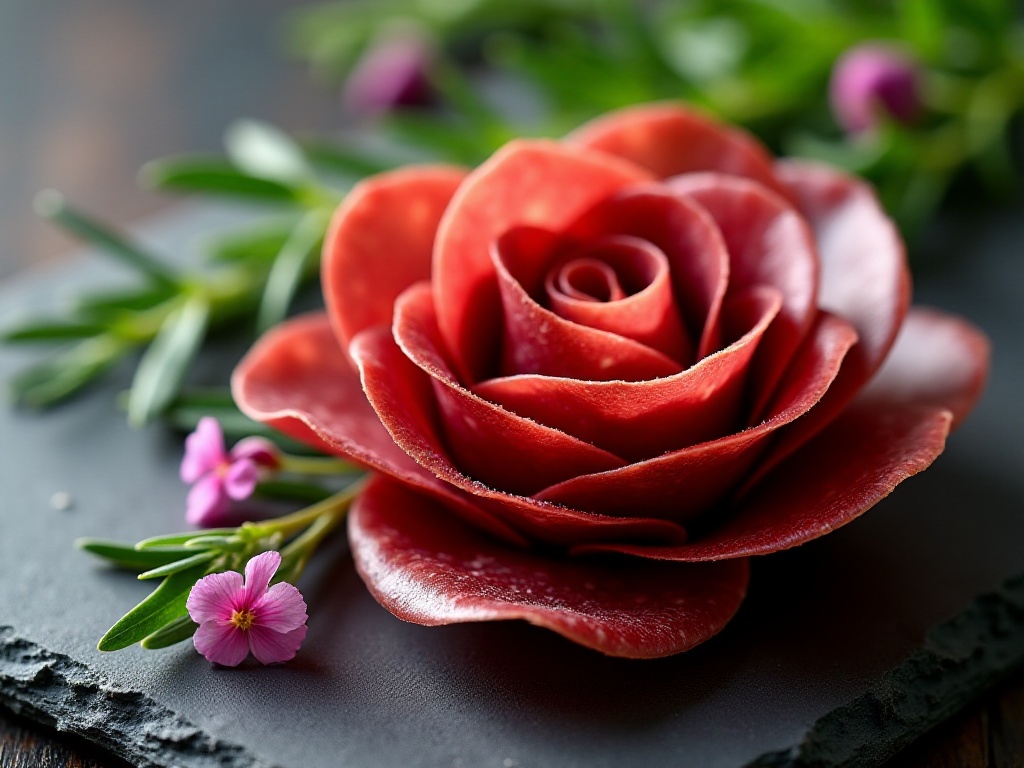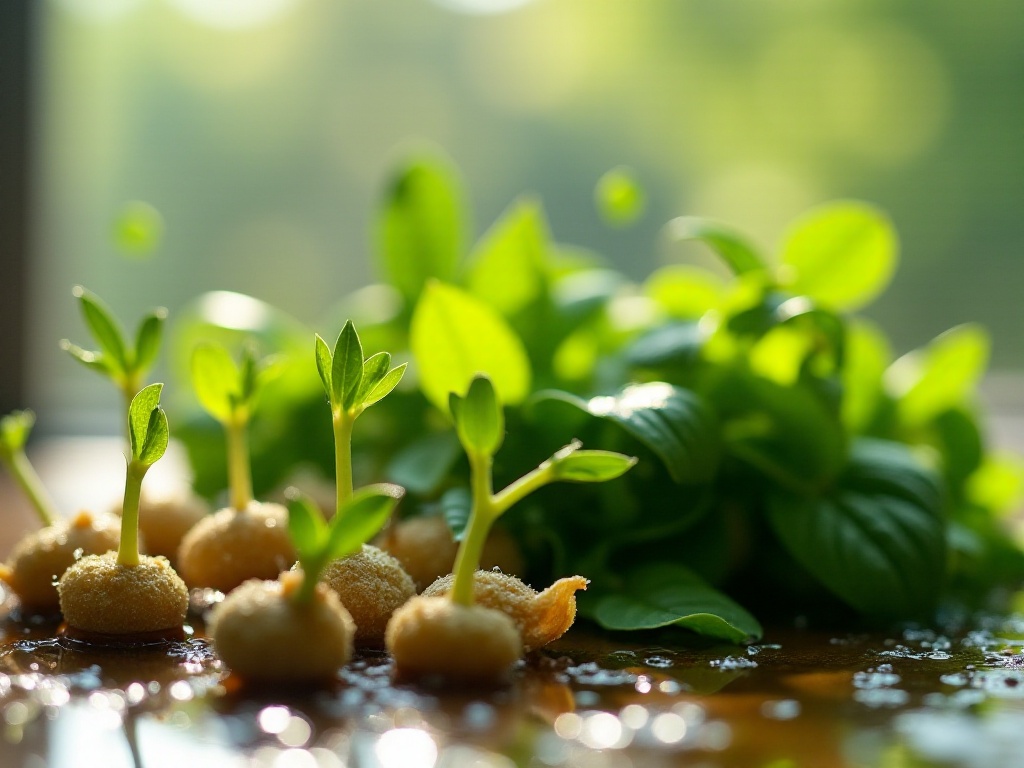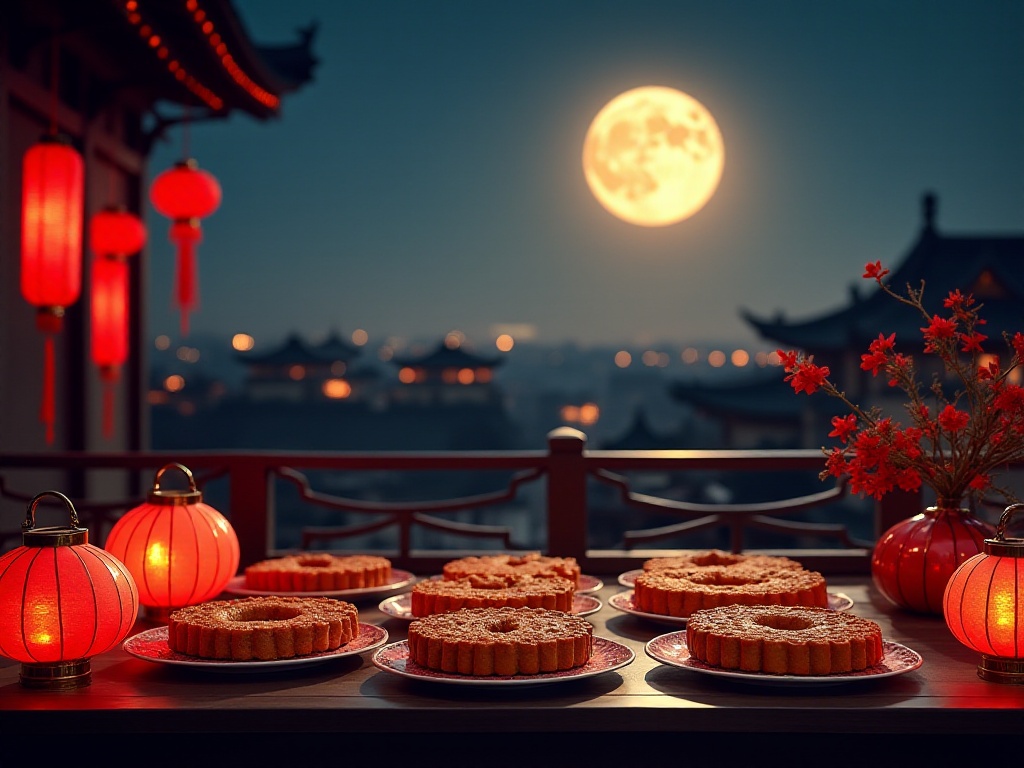Peanut Butter Handling
Peanut butter can be a troublesome food for many people, especially when opening a new jar, as the oil and solid parts often separate. There is actually a very simple and practical method to easily solve this problem. First, you need a butter knife. Gently insert the butter knife into the middle of the peanut butter to create a deep well - it doesn't need to be too deep, but make sure both the oil and solid parts can contact the knife surface. Then, starting from the center of this well, stir slowly outward. This method allows the oil and solid parts of peanut butter to mix evenly, saving effort while ensuring the delicious taste of peanut butter.
Have you tried this method? Don't you find it especially useful? Actually, this technique isn't just for peanut butter - it can be used for any food that needs mixing. Imagine when making cake batter, mixing will become easier and more even. Even in daily life, you can use the same method to handle separated canned foods like coconut milk or ketchup. Isn't it amazing how these little life hacks can be so magical?

Cheese Packaging Handling
Cheese packaging can often be challenging. Opening the package is easy, but maintaining its freshness and taste requires some tricks. First, you can cut a small opening along the edge of the package with scissors - don't make it too big, just enough to squeeze the cheese through. Squeeze the cheese out through this small opening to reduce air exposure and prevent premature spoilage. After squeezing out the cheese, don't rush to throw away the packaging. Put the cheese back in its original package, gently squeeze out the air, and seal the opening. This not only extends the shelf life of the cheese but also maintains its flavor.
Have you ever thought that such a small change could greatly extend the life of cheese? This not only saves money but also keeps ingredients fresh while cooking. Isn't it amazing how these little tricks in life can be so magical? You can even try this method when preserving other perishable foods, like butter or sauce.

Salami Rose Design
Have you ever tried cutting salami into rose shapes? This trick not only makes your table look more elegant but also provides visual enjoyment before eating. The method is actually quite simple: roll the salami slices from the center outward to form petals, then layer multiple rolled salami slices like a puzzle to create a complete rose. This process requires some patience and attention to detail, but the final effect will definitely amaze you.
Isn't it wonderful? Try this trick at your next gathering, and it's guaranteed to surprise your friends. Actually, this technique isn't limited to just salami - you can try this design with ham, sausage, or even vegetable slices to create various "flowers" to decorate your dishes. Imagine having beautiful "flowers" adorning your table of dishes - not just delicious but also beautiful, isn't that cool?

Oven Door Cleaning
The stubborn stains on oven doors are truly every kitchen housewife's nightmare. They look dirty and are difficult to clean. Actually, there's a very effective method to help you solve this problem. You need a cleaning scraper and some appropriate cleaning agents. First, spray some cleaner on the oven door and wait a few minutes to let the stains soften. Then, gently scrape off the stains with the cleaning scraper. Remember to maintain a certain angle with the scraper to avoid scratching the oven door while cleaning the stains thoroughly.
Don't you find this method both simple and effective? Actually, cleaning scrapers aren't just for oven doors - they can also be used to clean stubborn stains on other surfaces like stovetops, glass windows, and even car windows. Life's little tricks often help us save a lot of time and effort.

Frying Pan Cleaning
Oil stains and food residue on frying pans are always a headache, especially those burnt black parts. Is there an effortless and eco-friendly cleaning method? Of course there is! You can try this: pour a small amount of water and a few drops of dish soap into the pan, then heat it on low heat, letting the water and soap boil. At this point, you'll see the oil stains start to float up. Then turn off the heat, pour out the water, and gently wipe the bottom and sides of the pan with a sponge. This method not only saves effort but also doesn't cause any wear to your cookware.
Don't you find this method amazing? Give it a try, and perhaps you'll find that cleaning frying pans is no longer a chore. Actually, this method can also be used on other greasy cookware like woks or baking pans. Through this method, you can not only keep your kitchen clean but also extend the life of your cookware.
Label Removal
Labels stuck on glass bottles and plastic containers are always difficult to remove, especially those with particularly strong adhesive. There's actually a very simple trick: first use a hair dryer to heat the label, softening the glue, then use a toothpick or small knife to gently lift the edge of the label and slowly peel it off. If there's still residual glue, don't worry - gently wipe with olive oil or cooking oil to dissolve the glue, then clean with a damp cloth.
Don't you find this method practical? Next time you encounter difficult-to-remove labels, you'll know what to do. Actually, this trick isn't just for removing labels - it can also be used to deal with other adhesive residues, like tape marks accidentally stuck on furniture. Life hacks are truly everywhere.
Chinese New Year Customs

New Year's Eve Cleaning
For Chinese people, Spring Festival is one of the most important holidays of the year. On New Year's Eve, every household conducts a thorough cleaning, a tradition called "removing dust." Do you know why this is done? In Chinese tradition, sweeping dust not only cleans the house but also symbolizes clearing away the past year's bad luck and misfortune, bringing good luck and auspiciousness for the new year.
I particularly love this custom because it not only makes the house clean and tidy but is also a psychological cleansing and preparation. Through cleaning and organizing, we clear not just physical space but also mentally prepare for the new year. What about you? Have you experienced similar cleaning rituals? Actually, similar customs exist in other cultures, like Japanese New Year cleaning, all aimed at having a fresh start before the new year.
Worship Customs
Spring Festival worship customs are rich and diverse. Besides cleaning, there are many rituals like ancestral worship and paying respects to the God of Wealth. These rituals not only express respect for ancestors but also hope to receive their protection and blessings for family peace and health through these worship activities.
Have you participated in such worship activities? Did you also feel that solemnity and devotion? In these activities, we not only express gratitude to ancestors but also pass on and continue family traditions and culture through the form of worship. Actually, not just in China, many cultures have similar worship customs, like Korean ancestral ceremonies, all aimed at commemorating and respecting ancestors.
Mid-Autumn Festival Customs

Moon Viewing Custom
The Mid-Autumn Festival holds a unique position in Chinese culture, with moon viewing being one of the main activities of this holiday. Especially in Beijing, people gather in parks, squares, or on their balconies to admire the full moon and enjoy the joy of reunion. Have you ever looked up at that full moon on Mid-Autumn night and felt that sense of tranquility and happiness?
Moon viewing isn't just about appreciating beauty - it's more about enjoying time with family and friends. The moon symbolizes reunion and fulfillment in Chinese culture, so viewing the moon during Mid-Autumn Festival expresses longing for and blessings to loved ones. Actually, the tradition of moon viewing isn't just in China - many cultures have similar activities, like Japanese moon viewing parties, all aimed at enjoying the moon's beauty.
Mooncake Offerings
The Mid-Autumn Festival also has an ancient custom - moon worship. Ancients would offer mooncakes as sacrifices to the moon, praying for peace and good harvest. Red mooncakes, in particular, are seen as symbols of good fortune. Did you know that red symbolizes celebration and good luck in Chinese culture, so red mooncakes are not just delicious but also auspicious symbols?
Mooncake offerings aren't just about praying to the moon - they're more about cultural inheritance. Through such rituals, we not only express reverence for nature but also strengthen relationships between friends and family through sharing mooncakes. Actually, this custom varies among different regions and families, with some families using other foods for moon worship.

Mooncake Eating Tradition
Of course, eating mooncakes is the most unmissable part of Mid-Autumn Festival. Whether red or white mooncakes, all can be enjoyed. Mooncakes come in many varieties, from traditional red bean paste and lotus seed paste to modern snow skin and fruit fillings, offering an overwhelming selection. Eating mooncakes isn't just about enjoying the taste - it's also an expectation of reunion and harvest.
The taste of mooncakes isn't just rich in flavors but also contains deep cultural connotations. Through sharing mooncakes, we not only taste delicious food but also share celebration and blessings. Actually, the making and taste of mooncakes vary among different regions and families, with some places adding local special ingredients to their mooncakes.

Other Traditional Festival Customs
Eating Tangyuan on Lantern Festival
You must be familiar with eating tangyuan (sweet rice balls) during the Lantern Festival? Tangyuan isn't just delicious but also carries the meaning of completeness and perfection. Have you noticed that tangyuan's shape is as round as the moon, symbolizing family reunion and life's perfection? Eating a bowl of hot tangyuan warms up your entire heart.
Tangyuan isn't just food - it's an important symbol in Chinese traditional culture. Through eating tangyuan, we not only enjoy sweetness but also express expectations and wishes for new life. Actually, there are many types and ways of making tangyuan - for example, southern tangyuan and northern yuanxiao are quite different, but they're equally delicious.
Eating Chongyang Cake on Double Ninth Festival
The Double Ninth Festival is one of China's traditional festivals, and eating Chongyang cake is a unique custom of this festival. Chongyang cake stands high, symbolizing rising step by step. Have you noticed that Chongyang cake isn't just food but also represents wishes for a better future life?
Chongyang cake isn't just food - it carries far-reaching traditional symbolism. Through eating Chongyang cake, we not only enjoy delicious food but also pray for health, longevity, and career success. Actually, the making and taste of Chongyang cake vary by region, with some places adding ingredients like peanuts and dates to enhance flavor.
In our daily lives, these tips and traditional customs not only make life more colorful but also help us find peace and meaning amid busyness. Through these tips, you can not only make your life more convenient and interesting but also experience the charm of Chinese traditional culture. Hope these shares can help you find more joy and inspiration in daily life. Next time you encounter these situations, will you try these methods? Or do you have your own unique life hacks? Welcome to share in the comments section, let's exchange life wisdom together.


